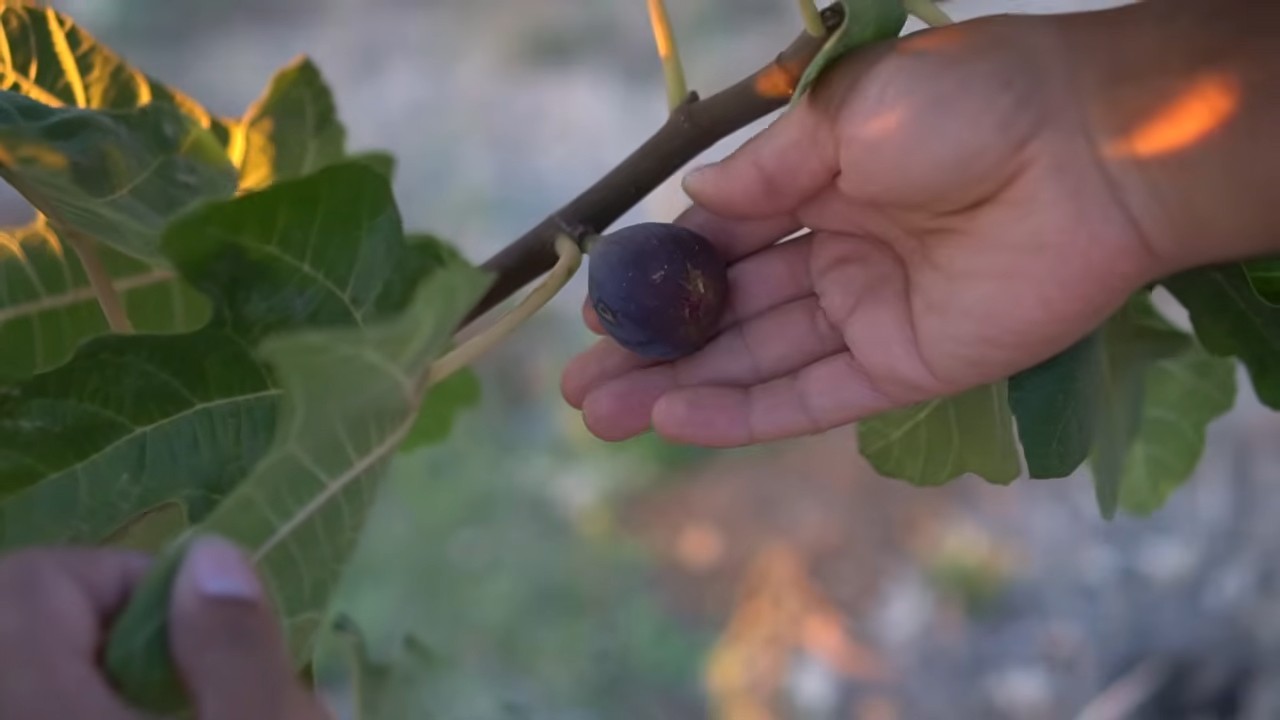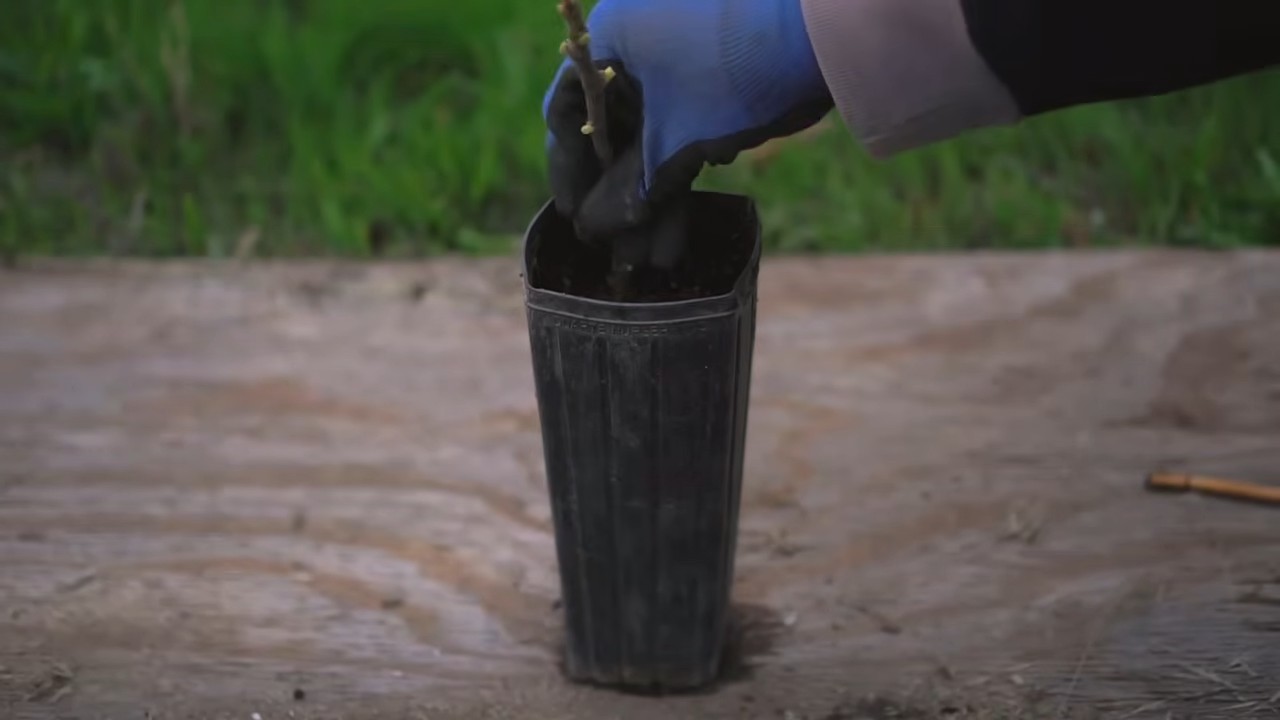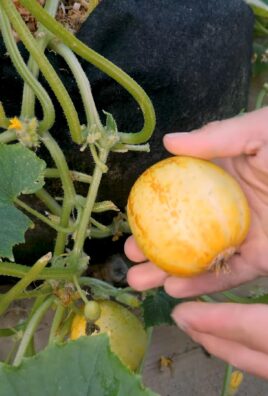Growing Figs Indoors might seem like a challenge reserved for seasoned gardeners with sprawling greenhouses, but I’m here to tell you it’s absolutely achievable, even if you’re working with a cozy apartment and a sunny windowsill! Have you ever dreamt of plucking a perfectly ripe, sweet fig straight from your own tree, right in the middle of winter? Well, dream no more!
Figs have a rich history, dating back to ancient civilizations where they were revered as symbols of prosperity and peace. From the Mediterranean to the Middle East, figs have nourished and delighted people for centuries. While traditionally grown outdoors in warm climates, the desire to enjoy these delectable fruits year-round has led to innovative techniques for indoor cultivation.
Why should you consider growing figs indoors? For many of us, the climate simply isn’t conducive to outdoor fig cultivation. Frost and cold temperatures can wreak havoc on these sensitive trees. But beyond climate control, growing figs indoors offers a unique opportunity to connect with nature, nurture a living thing, and enjoy the unparalleled satisfaction of harvesting your own delicious fruit. Plus, it’s a fantastic conversation starter! This DIY guide will provide you with the essential tricks and hacks to successfully cultivate your own thriving fig tree indoors, regardless of your experience level. Get ready to embark on a rewarding and fruitful journey!

Growing Figs Indoors: Your Comprehensive DIY Guide
Hey plant friends! Have you ever dreamed of harvesting juicy, sweet figs right in your living room? Me too! And guess what? It’s absolutely doable! Fig trees are surprisingly adaptable and can thrive indoors with the right care. In this article, I’ll show you step-by-step how to grow your own indoor fig tree, so you can soon enjoy your own delicious figs.
What you need: The Right Equipment
Before we get started, let’s make sure you have everything you need. Here is a list of the most important items:
- A fig tree sapling: Choose a self-pollinating variety that is suitable for growing in pots. Popular options include ‘Brown Turkey’, ‘Celeste’, or ‘Little Miss Figgy’. These varieties are more compact and produce fruit without pollination.
- A large pot: The pot should be at least 45 cm (18 inches) in diameter, ideally even larger. Fig trees have a strong root system that needs space to grow. Make sure the pot has drainage holes to prevent waterlogging.
- High-quality potting soil: Use a well-draining potting mix that is rich in organic matter. A mixture of potting soil, peat moss, and perlite is ideal.
- Fertilizer: A balanced, water-soluble fertilizer (e.g., 20-20-20) is perfect for supplying your fig tree with the necessary nutrients.
- Watering can or spray bottle: For watering and misting the leaves.
- Pruning tool: A sharp pair of pruning shears or a knife to prune the tree if needed.
- Grow light (optional): If you don’t have enough natural light, a grow light can help promote growth.
- Pebbles or clay shards: To improve drainage in the pot.
Step-by-Step Guide: Your Fig Tree Project
Now that we have everything, we can start the actual planting. Don’t worry, it’s easier than you think!
- Prepare the pot: Start by placing a layer of pebbles or clay shards at the bottom of the pot. This helps to improve drainage and prevents the roots from sitting in water.
- Fill the pot with soil: Fill the pot with the potting soil, but leave about 5-8 cm (2-3 inches) of space to the rim.
- Plant the fig tree: Carefully remove the fig tree sapling from its original container. Gently loosen the roots if they are heavily root-bound. Place the sapling in the center of the pot and fill the remaining space with soil. Make sure the root collar (the transition between the trunk and the roots) is just above the soil surface.
- Water thoroughly: Water the fig tree thoroughly until water runs out of the drainage holes. This helps the soil to settle and moistens the roots.
- Find the right location: Place the fig tree in a sunny location. Fig trees love light! A south-facing window is ideal, but an east or west-facing window can also work. If you don’t have enough natural light, use a grow light to promote growth.
- Water regularly: Water the fig tree regularly, but avoid waterlogging. The soil should be moist, but not wet. Check the soil’s moisture by sticking your finger about 2-3 cm (1 inch) deep into the soil. If the soil feels dry, it’s time to water.
- Fertilize: During the growing season (spring and summer), fertilize the fig tree every two to four weeks with a balanced, water-soluble fertilizer. Follow the instructions on the package. In the fall and winter, you can reduce or stop fertilizing altogether.
- Prune: Prune the fig tree in late winter or early spring before new growth begins. Remove any dead, damaged, or crossing branches. You can also prune the tree to maintain its shape and encourage fruit production.
- Repot: When the fig tree becomes too large for its pot, you will need to repot it. This is usually necessary every one to two years. Choose a pot that is slightly larger than the previous one and use fresh potting soil.
Proper Care: How to Keep Your Fig Tree Happy
Proper care is crucial for your fig tree to thrive indoors. Here are some important tips:
- Light: Fig trees need at least 6-8 hours of sunlight per day. If you don’t have enough natural light, use a grow light.
- Temperature: Fig trees prefer temperatures between 18°C and 27°C (65°F and 81°F). Avoid extreme temperature fluctuations.
- Humidity: Fig trees like high humidity. You can increase the humidity by regularly spraying the leaves with water or placing the pot on a pebble tray filled with water.
- Pests and Diseases: Keep an eye out for pests like spider mites, aphids, and mealybugs. If you spot pests, treat them with a suitable insecticide or a mixture of water and dish soap. Also, watch for signs of diseases like root rot or fungal infections.
Challenges and Solutions: What to Do When Something Goes Wrong
Even if you do everything right, problems can sometimes occur. Here are some common challenges and how to solve them:
- Leaf drop: Leaf drop can be caused by various factors, such as too little light, too much or too little water, temperature fluctuations, or pests. Check the conditions and adjust them accordingly.
- No fruit: If your fig tree is not producing fruit, it could be due to a lack of pollination (although self-pollinating varieties don’t require it), too little light, or a nutrient deficiency. Make sure the tree gets enough light and fertilize it regularly.
- Yellow leaves: Yellow leaves can be a sign of overwatering, nutrient deficiency, or pests. Check the conditions and adjust them accordingly.
Harvest Time: Enjoy Your Own Figs
After all the hard work, the best part arrives: the harvest! Figs are ripe when they are soft and can be easily pulled from the tree. The color of the figs depends on the variety. Enjoy your fresh figs straight from the tree or use them in your favorite recipes.
Additional Tips and Tricks: For the Fig Tree Pro
- Rotate the pot regularly: Rotate the pot regularly so that all sides of the tree get even light.
- Use rainwater: If possible, use rainwater for watering. It is softer than tap water and does not contain harmful chemicals.
- Mulch: Cover the soil around the tree with a layer of mulch to retain moisture and suppress weeds.
- Overwintering: In colder climates, it may be necessary to move the fig tree to a cooler location in winter to encourage its dormant period.
I hope this guide has helped you grow your own indoor fig tree. With a little patience and care, you can soon enjoy your own delicious figs. Good luck and have fun gardening

Conclusion
So, there you have it – a comprehensive guide to successfully growing figs indoors! We’ve explored everything from selecting the right variety and providing optimal lighting to mastering watering techniques and tackling potential pests. But why should you embark on this indoor fig-growing adventure? Because the reward is truly exceptional: the unparalleled satisfaction of harvesting your own sweet, succulent figs, right in the comfort of your home.
Imagine the delight of plucking a perfectly ripe fig, still warm from the (artificial) sun, and enjoying its rich, honeyed flavor. Think of the conversations it will spark, the envy it will inspire, and the sheer joy of sharing your homegrown bounty with friends and family. Growing figs indoors isn’t just about cultivating a plant; it’s about cultivating an experience, a connection to nature, and a delicious, healthy treat.
This DIY trick of growing figs indoors is a must-try for several compelling reasons. Firstly, it extends the fig-growing season far beyond its natural limitations, allowing you to enjoy fresh figs even in colder climates or during the off-season. Secondly, it provides a controlled environment, minimizing the risk of pests, diseases, and unpredictable weather conditions that can plague outdoor fig trees. Thirdly, it’s a fantastic way to add a touch of greenery and natural beauty to your indoor space, creating a calming and inviting atmosphere.
But the beauty of this DIY project lies in its adaptability. Feel free to experiment with different fig varieties to discover your personal favorite. Consider using a self-watering planter to simplify the watering process, or adding a layer of mulch to the soil to retain moisture and suppress weeds. You could even try training your fig tree into a unique espalier shape for a visually stunning display.
Don’t be afraid to get creative and personalize your indoor fig-growing experience!
We encourage you to take the plunge and try growing figs indoors. It may seem daunting at first, but with a little patience, dedication, and the knowledge you’ve gained from this guide, you’ll be well on your way to enjoying a bountiful harvest. And most importantly, we want to hear about your journey! Share your experiences, successes, and challenges in the comments below. Let’s build a community of indoor fig enthusiasts and learn from each other. What variety did you choose? What challenges did you face, and how did you overcome them? What are your favorite ways to enjoy your homegrown figs?
Your insights and experiences will not only inspire others but also contribute to a collective understanding of the best practices for growing figs indoors. So, go ahead, get your hands dirty, and embark on this rewarding adventure. We can’t wait to hear your story! Remember, the sweetest figs are the ones you grow yourself.
Frequently Asked Questions (FAQ)
What is the best fig variety to grow indoors?
Choosing the right fig variety is crucial for indoor success. Some of the most popular and well-suited varieties for indoor growing include ‘Brown Turkey,’ ‘Celeste,’ ‘Chicago Hardy,’ and ‘Little Miss Figgy.’ ‘Brown Turkey’ is known for its reliability and tolerance of less-than-ideal conditions. ‘Celeste’ produces small, sweet figs and is relatively compact. ‘Chicago Hardy’ is exceptionally cold-hardy, making it a good choice for those who might occasionally expose their fig tree to cooler temperatures. ‘Little Miss Figgy’ is a dwarf variety, perfect for smaller spaces and containers. Consider your space limitations, desired fig size and flavor, and local climate when making your selection. Researching the specific needs of each variety will help you make an informed decision.
How much light do indoor fig trees need?
Fig trees are sun-loving plants and require ample light to thrive indoors. Ideally, they need at least 6-8 hours of direct sunlight per day. If you don’t have a south-facing window that provides sufficient sunlight, you’ll need to supplement with artificial lighting. Grow lights, such as LED grow lights or fluorescent grow lights, are an excellent option. Position the grow lights about 6-12 inches above the top of the tree and keep them on for 12-16 hours per day. Monitor your fig tree closely for signs of insufficient light, such as leggy growth, pale leaves, or a lack of fruit production. Adjust the lighting accordingly to ensure your tree receives the light it needs.
How often should I water my indoor fig tree?
Watering is a critical aspect of indoor fig tree care. The frequency of watering will depend on several factors, including the size of the pot, the type of soil, the temperature, and the humidity. As a general rule, water your fig tree when the top inch of soil feels dry to the touch. Water thoroughly until excess water drains out of the bottom of the pot. Avoid overwatering, as this can lead to root rot. During the dormant season (winter), reduce watering frequency. Check the soil moisture regularly and adjust your watering schedule as needed. Using a well-draining potting mix is essential to prevent waterlogging.
How do I fertilize my indoor fig tree?
Fig trees benefit from regular fertilization, especially during the growing season (spring and summer). Use a balanced fertilizer with an N-P-K ratio of 10-10-10 or 20-20-20. Follow the instructions on the fertilizer label for application rates. Fertilize your fig tree every 2-4 weeks during the growing season. Reduce or stop fertilizing during the dormant season. You can also use organic fertilizers, such as compost tea or fish emulsion, to provide nutrients to your fig tree. Avoid over-fertilizing, as this can damage the roots.
How do I prune my indoor fig tree?
Pruning is essential for maintaining the shape and size of your indoor fig tree, as well as promoting fruit production. Prune your fig tree in late winter or early spring, before new growth begins. Remove any dead, damaged, or crossing branches. Thin out the canopy to improve air circulation and light penetration. You can also prune to shape the tree and control its size. Fig trees produce fruit on new growth, so avoid pruning too heavily, as this can reduce fruit production. Use clean, sharp pruning shears to make clean cuts.
What are common pests and diseases that affect indoor fig trees?
Indoor fig trees can be susceptible to various pests and diseases, including spider mites, scale, aphids, and fig rust. Regularly inspect your fig tree for signs of pests or diseases. If you detect any problems, take action immediately. Spider mites can be controlled with insecticidal soap or neem oil. Scale can be removed manually or treated with horticultural oil. Aphids can be washed off with a strong stream of water or treated with insecticidal soap. Fig rust is a fungal disease that can cause leaf spots and premature leaf drop. Improve air circulation and avoid overhead watering to prevent fig rust. Treat affected leaves with a fungicide.
How do I encourage my indoor fig tree to produce fruit?
Encouraging fruit production in indoor fig trees requires providing optimal growing conditions. Ensure your fig tree receives adequate light, water, and nutrients. Pollination is also essential for fruit set. While some fig varieties are self-pollinating, others require pollination by fig wasps. Since fig wasps are not typically found indoors, you may need to hand-pollinate your fig tree. Use a small paintbrush to transfer pollen from the male flowers to the female flowers. You can also try shaking the tree gently to distribute pollen. Maintaining consistent temperatures and humidity levels can also promote fruit production.
Can I move my indoor fig tree outdoors during the summer?
Yes, you can move your indoor fig tree outdoors during the summer, but it’s essential to acclimate it gradually to the outdoor environment. Start by placing your fig tree in a shaded location for a few hours each day, gradually increasing the amount of sunlight it receives over a week or two. This will help prevent sunburn and leaf scorch. Ensure your fig tree is protected from strong winds and extreme temperatures. Bring your fig tree back indoors before the first frost.
What do I do if my fig tree drops its leaves?
Leaf drop in fig trees can be caused by various factors, including stress, overwatering, underwatering, insufficient light, or sudden changes in temperature or humidity. Identify the potential cause of the leaf drop and take corrective action. Ensure your fig tree is receiving adequate light, water, and nutrients. Avoid overwatering or underwatering. Maintain consistent temperatures and humidity levels. If the leaf drop is caused by stress, the tree should recover once the stressor is removed.
How long does it take for an indoor fig tree to produce fruit?
The time it takes for an indoor fig tree to produce fruit can vary depending on the variety, age, and growing conditions. Some fig trees may produce fruit within a year or two, while others may take longer. Providing optimal growing conditions, including adequate light, water, and nutrients, can help accelerate fruit production. Patience is key when growing figs indoors.





Leave a Comment